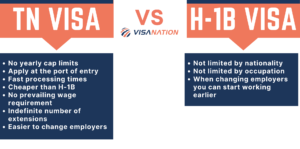SCOTUS Grants Two IP Cases, Including Amgen v. Sanofi on Enablement
The U.S. Supreme Court granted petitions for certiorari in two intellectual property cases Friday, one dealing with the limits of extraterritorial application of the Lanham Act and another asking the High Court to weigh in on whether “enablement” means a specification must enable those skilled in the art “to reach the full scope of claimed embodiments” without undue experimentation.
Enablement Inquiry
In Amgen v. Sanofi, which will be eagerly watched by life science patent owners and practitioners, the Court granted cert on only on question two of the petition, which asks:
“Whether enablement is governed by the statutory requirement that the specification teach those skilled in the art to “make and use” the claimed invention, 35 U.S.C. § 112, or whether it must instead enable those skilled in the art “to reach the full scope of claimed embodiments” without undue experimentation—i.e., to cumulatively identify and make all or nearly all embodiments of the invention without substantial “ ‘time and effort,’ ” Pet.App. 14a (emphasis added).”
The United States Solicitor General (SG) in September accepted the Court’s invitation to file an amicus brief in the case and recommended that the Court deny the petition. The SG said Amgen’s argument that the CAFC “erred by treating enablement as a question of law and by examining the full scope of the claims in assessing whether they are fully enabled…. lack merit.”
The SG’s brief said that the enablement inquiry includes both legal and factual components. “Disputes about the meaning of the statutory language present classic questions of law, whereas the Wands factors require factual inquiries,” explained the brief. The SG described Amgen’s contention that enablement is a factual inquiry for a jury to determine as “overly simplistic.” Amgen had argued that the district court and Federal Circuit “usurped the jury’s role” in overturning its verdict on a motion for judgment as a matter of law (JMOL). But the SG said Amgen “effectively concede[s] that the meaning of the statutory enablement requirement is a question of law” in their second question presented in their petition for certiorari, namely, “Whether enablement is governed by the statutory requirement that the specification teach those skilled in the art to “make and use” the claimed invention, 35 U.S.C. § 112, or whether it must instead enable those skilled in the art “to reach the full scope of claimed embodiments” without undue experimentation—i.e., to cumulatively identify and make all or nearly all embodiments of the invention without substantial “ ‘time and effort.’” The SG explained: “Petitioners’ request that this Court clarify the governing enablement standard belies their claim that enablement turns exclusively on ‘factual determination[s].’”
While the Supreme Court traditionally follows the recommendation of the SG, the Court today granted review.
Scope of the Lanham Act
Abitron Austria GmbH v. Hetronic International, Inc. is a trademark case in which the U.S. Court of Appeals for the Tenth Circuit affirmed a $90 million damages award for trademark infringement based on infringement occurring almost entirely outside of the United States. The Solicitor General filed a brief in September of this year asking the Court to grant cert in order to properly limit the application of the Lanham Act so that damages are only awarded when the alleged infringement has a likelihood of causing confusion among U.S. consumers.
Abitron’s petition follows a U.S. Court of Appeals for the Tenth Circuit decision from August 2021 in which the appellate court affirmed a jury verdict from the Western District of Oklahoma that awarded $90 million to Hetronic against a series of former business partners from Austria and Germany, including Abitron Austria. Those companies had contracted to distribute Hetronic radio remote controls for heavy-duty construction equipment abroad, but after that business relationship soured, the Austrian and German firms reverse-engineered an identical product, prompting Hetronic’s lawsuit. The damages award entered in Western Oklahoma included $240,000 for infringing products sold directly into the United States, $2 million for infringing products sold to foreign customers who intended to ultimately sell those products into the United States, and $87 million for infringing products sold abroad and that were not designated for resale into the U.S., although a portion of those sales displaced foreign sales for Hetronic.
In affirming the Western Oklahoma’s jury verdict on damages, the Tenth Circuit cited to the Supreme Court’s 1952 decision in Steele v. Bulova Watch Co. for the premise that the Lanham Act’s provisions on civil liability for infringement could apply abroad in certain circumstances. Though the Tenth Circuit applied a First Circuit test requiring a showing that the alleged infringement by a foreign national has a substantial effect on U.S. commerce, a showing not required for foreign infringement conducted by an American defendant, the Tenth Circuit found this test satisfied under two theories. First, the sale of infringing goods into the U.S. gave the created a reasonably strong interest in the litigation permitting the court to hold Abitron Austria and others liable for their foreign sales as well. Second, under a diversion-of-sales theory, the Tenth Circuit found that the record evidence of tens of millions of dollars in lost foreign sales for Hetronic, an American company, deprived the U.S. economy of those revenues.
IPWatchdog will continue to follow and report on these cases as they unfold.
Eileen McDermott
Eileen McDermott is the Editor-in-Chief of IPWatchdog.com. Eileen is a veteran IP and legal journalist, and no stranger to the intellectual property world, having held editorial and managerial positions at […see more]







